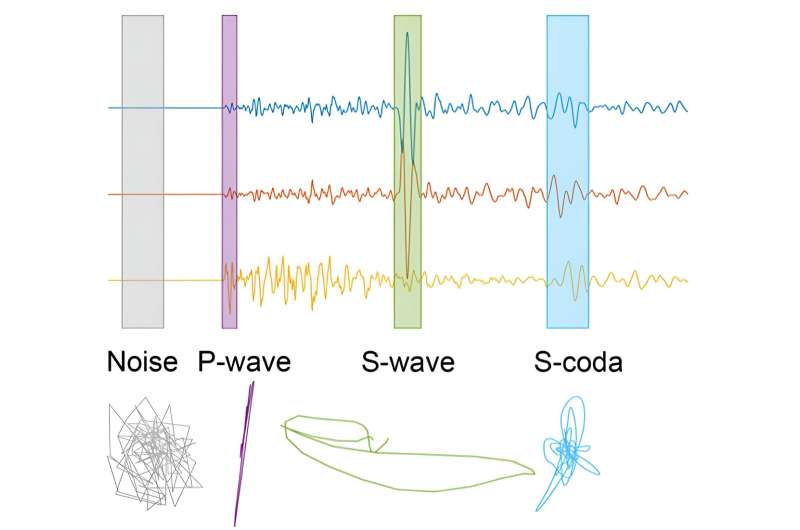This article has been reviewed according to Science X's editorial process and policies. Editors have highlighted the following attributes while ensuring the content's credibility:
fact-checked
trusted source
proofread
Mathematical innovations enable advances in seismic activity detection

Amidst the unique landscape of geothermal development in the Tohoku region, subtle seismic activities beneath the Earth's surface present a fascinating challenge for researchers. While earthquake warnings may intermittently alert us to seismic events, there exist numerous smaller quakes that have long intrigued resource engineers striving to detect and understand them.
Mathematical innovations from Tohoku University researchers are advancing the detection of more types—and fainter forms—of seismic waves, paving the way for more effective earthquake monitoring and risk assessment.
The results of their study were published in IEEE Transactions on Geoscience and Remote Sensing.
Collection of seismic data relies on the number and positioning of sensors called seismometers. Especially where only limited deployment of seismic sensors is possible, such as in challenging environments like the planet Mars or when conducting long-term monitoring of captured and stored carbon, optimizing data extraction from each and every sensor becomes crucial.
One promising method for doing so is polarization analysis, which involves studying 3D particle motion and has garnered attention for its ability to leverage three-component data, offering more information than one-component data. This approach enables the detection and identification of various polarized seismic waveforms, including S-waves, P-waves and others.
Polarization analysis using a spectral matrix (SPM) in particular is a technique used to analyze the way particles move in three dimensions over time and at different frequencies, in other words, in the time-frequency domain. However, in scenarios where the desired signal is weak compared to background noise—known as low signal-to-noise ratio (SNR) events, which are typical in underground reservoirs—SPM analysis faces limitations.
Due to mathematical constraints, it can only characterize linear particle motion (meaning the fast-moving, easy-to-detect P-waves), making the analysis of other waveforms (such as the secondary arriving S-waves) challenging.
"We overcame the technical challenges of conventional SPM analysis and expanded it for broader polarization realization by introducing time-delay components," said Yusuke Mukuhira, an assistant professor at the Institute of Fluid Science of Tohoku University and lead author of the study.
Compared to existing techniques, his team's incorporation of time-delay components enhanced the accuracy of SPM analysis, enabling the characterization of various polarized waves, including S-waves, and the detection of low-SNR events with smaller amplitudes.
A key innovation in the study is the introduction of a new weighting function based on the phase information of the first eigenvector—a special vector that, when multiplied by the matrix, results in a scaled version of the original vector. The purpose of the weighting function is to assign different levels of importance to different parts of signals according to their significance, thereby reducing false alarms.
Synthetic waveform tests showed that this addition significantly improved the evaluation of seismic wave polarization, a crucial factor in distinguishing signal from noise.
"Technically, we have developed a signal processing technique that improves particle motion analysis in the time and frequency domain," Mukuhira said.
The research team validated their methodology using real-world data recorded at the Groningen gas field in the Netherlands. The results showcased superior seismic motion detection performance, bringing to light two low-SNR events that had previously gone unnoticed by conventional methods.
These findings hold the potential for applications across various fields, including seismology and geophysics, particularly in monitoring underground conditions with limited observation points. The implications extend to earthquake monitoring, planetary exploration and resource development.
More information: Takayuki Nagata et al, Polarization Analysis in Time–Frequency Domain by Complex Spectral Matrix: Application to Various Phases of Seismogram, IEEE Transactions on Geoscience and Remote Sensing (2024). DOI: 10.1109/TGRS.2024.3352817
Provided by Tohoku University




















